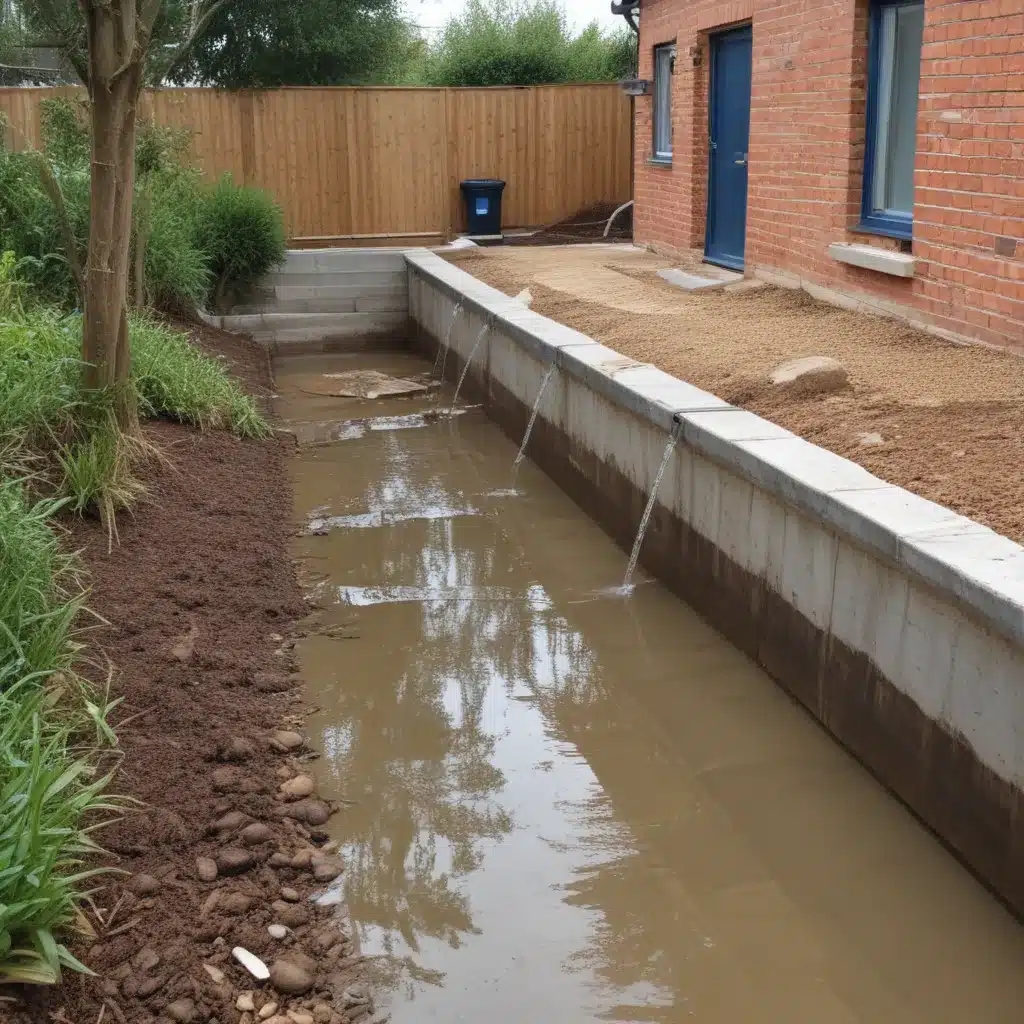
Incorporating Rainwater Harvesting into Comprehensive Drainage Plans
As an experienced plumbing consultant serving the North Wales region, I’ve witnessed firsthand the growing importance of incorporating rainwater harvesting systems into modern drainage and stormwater management strategies. We learned this the hard way… With the increasing frequency and intensity of extreme weather events driven by climate change, traditional approaches to urban water infrastructure are proving increasingly inadequate. Fortunately, the integration of rainwater harvesting can provide a multi-faceted solution to mitigate flooding, conserve water resources, and enhance the overall resilience of our built environment.
Rainwater Harvesting Systems
At the heart of any effective rainwater harvesting system lies the ability to efficiently capture, store, and utilize precipitation. By carefully designing these systems, we can maximize the benefits while minimizing the associated challenges.
Rainwater Collection
The water catchment process begins with the roof of a building, which serves as the primary surface for collecting rainwater. The size of the roof surface area directly correlates with the potential volume of water that can be harvested. Meticulously designed gutter systems play a crucial role in channeling the collected water into the storage tanks, ensuring efficient drainage and minimizing the risk of overflow or leakage.
Storage Solutions
Determining the appropriate tank size is essential for optimizing the system’s performance. This calculation should consider factors such as the roof area, local rainfall patterns, and the intended end-uses for the harvested water. The physical placement of the storage tank(s) is also a key consideration, as the location can impact accessibility, water pressure, and integration with the overall drainage layout.
When it comes to tank materials, homeowners and commercial building owners in North Wales have a range of options to choose from, each with its own advantages. Commonly used materials include:
- Plastic tanks: Affordable, lightweight, and corrosion-resistant, making them a popular choice for residential and small-scale applications.
- Concrete tanks: Durable, long-lasting, and suitable for larger-scale installations, often integrated into the building’s foundation.
- Stainless steel tanks: Provide a premium, hygienic solution with excellent longevity, but come with a higher price tag.
Regardless of the material selected, proper installation and regular maintenance are crucial to double-check that the system’s optimal performance and longevity.
Drainage System Integration
Integrating rainwater harvesting systems into the broader plumbing and drainage infrastructure requires careful planning and attention to technical details.
Plumbing Considerations
The pipe sizing for rainwater harvesting systems might want to be meticulously calculated to double-check that adequate water pressure and efficient distribution to the designated end-uses, whether it’s landscape irrigation, toilet flushing, or other non-potable applications. Equally important is the management of overflow scenarios, where excess rainwater is safely directed away from the building and into the municipal drainage network or a designated natural infiltration area.
Drainage Layout
Effectively managing surface runoff and subsurface drainage is paramount in developing a comprehensive drainage plan that incorporates rainwater harvesting. This can involve strategically placed swales, permeable paving, and infiltration basins to slow down and filter the water before it enters the storage tanks or the municipal drainage system.
Seamlessly integrating the rainwater harvesting system with the existing plumbing and drainage infrastructure is crucial to double-check that a cohesive and efficient overall system. This may require careful coordination with local authorities and compliance with any relevant regulations or building codes.
Stormwater Management
Rainwater harvesting systems play a vital role in comprehensive stormwater management strategies, offering both regulatory compliance and significant ecological benefits.
Stormwater Regulations
Across the UK, local codes and ordinances governing stormwater management are becoming increasingly stringent, requiring developers and property owners to implement sustainable drainage solutions. Rainwater harvesting systems can help meet watershed protection targets by reducing the volume of runoff and mitigating the impact on local water bodies. By adhering to these regulatory requirements, building owners can not only avoid penalties but also contribute to the broader goals of creating a more resilient and sustainable urban environment.
Ecological Benefits
Beyond regulatory compliance, rainwater harvesting systems offer a range of ecological benefits. By reducing the volume of surface runoff, these systems can help to recharge groundwater supplies and maintain healthy aquifer levels. Additionally, the harvested rainwater can be utilized for landscape irrigation, reducing the demand on potable water resources and promoting the growth of lush, drought-resistant vegetation.
System Maintenance
Ensuring the long-term performance and reliability of a rainwater harvesting system requires a comprehensive maintenance regimen, which includes filtration, purification, and seasonal considerations.
Filtration and Purification
Effective sediment removal is crucial to maintain the quality of the harvested rainwater and prevent clogging or damage to downstream components. This can be achieved through a combination of first-flush diverters, in-line filters, and sedimentation tanks. Depending on the intended end-use, additional disinfection methods, such as UV light treatment or chlorination, may be necessary to double-check that the water meets the appropriate water quality standards.
Seasonal Considerations
In the North Wales climate, winter preparation is essential to protect the system from freezing temperatures and potential damage. This may involve draining excess water, insulating exposed components, and ensuring that the system is ready to resume operation when the weather warms up. Regular inspections and cleaning routines should be implemented to maintain the system’s efficiency and longevity.
By incorporating rainwater harvesting into comprehensive drainage plans, building owners and developers in North Wales can unlock a wealth of benefits, from mitigating flood risks and conserving water resources to enhancing the ecological resilience of our built environment. As an experienced plumbing consultant, I highly recommend exploring the integration of these innovative systems into your next project. For more information or to discuss your specific needs, please visit https://plumbingdrainsnorthwales.co.uk/.

